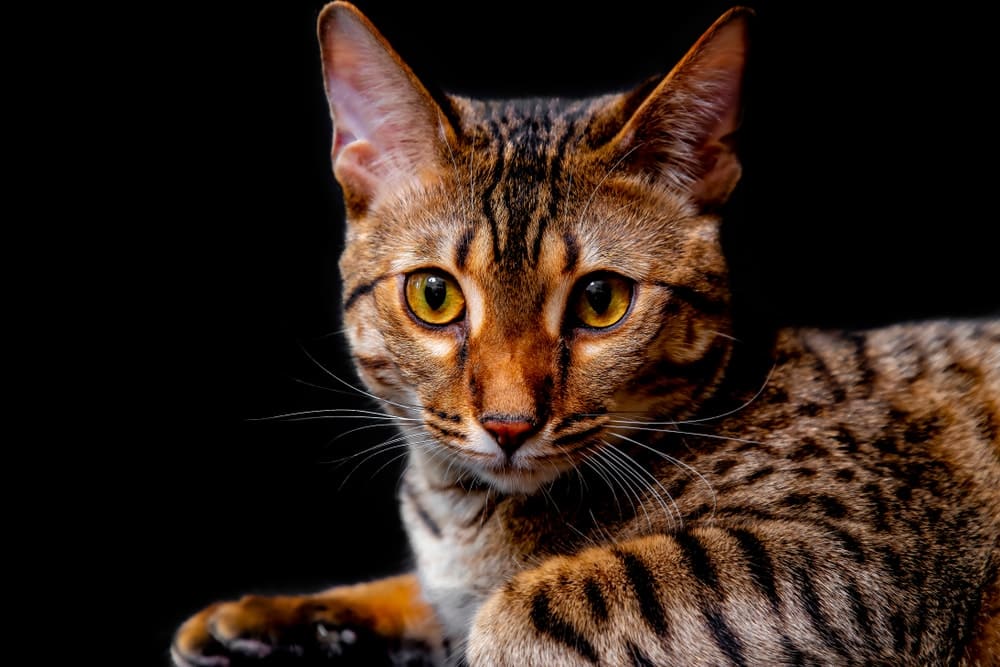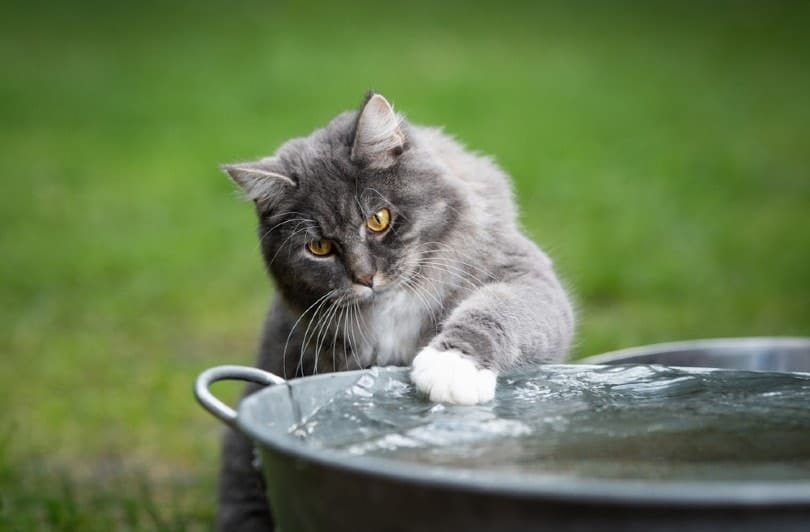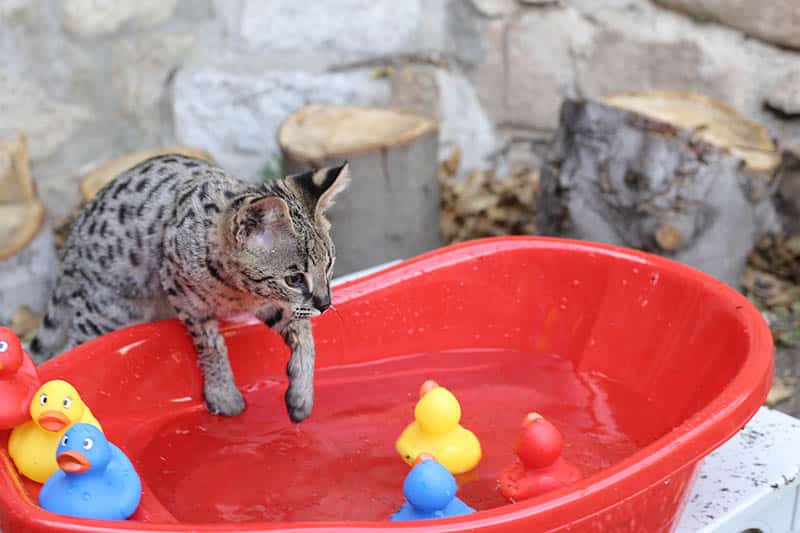Click to Skip Ahead
You might have heard that cats hate water, and for many cats, that’s true. But not all cats are like this. There are a few breeds that enjoy the water and even love to swim! Savannah cats are one of these breeds that love the water! These elegant cats have different personalities from many domestic cats, especially when it comes to water.
Do Savannah Cats Like Water?
Most Savannah cats love to play in the water! Some enjoy swimming in pools too. Many Savannah cats enjoy water so much that they play in their water bowls or jump into the shower with their owners.
Savannah cats like to put their toys into the water and practice “fishing” for them. Note that this practice will also apply to real fish kept in an aquarium, so if you have one, you’ll need to keep it out of reach!
Some Savannahs also enjoy playing with running water. These creatures are smart, so they are capable of learning how to turn on the faucet or flush the toilet because they find it enjoyable. It’s best to keep toilet bowls closed at all times. Savannah kittens in particular are at high risk of getting hurt because they jump into the toilet bowl and can’t get out.

Can Savannah Cats Swim?
Yes! Savannah cats are excellent swimmers and will thoroughly enjoy swimming in the pool. Whether a cat likes water doesn’t affect their swimming ability. Most cats can swim quite well if they need to; they just avoid using the skill due to a dislike of getting wet.
Do Savannah Cats Like Baths?
While most cats detest bath time, Savannah cats often enjoy it. You can use their love of water to help them stay clean, but you may have to desensitize them to the washing and drying process.
If your Savannah really enjoys the water, add toys to the bathtub while they’re in there. Allowing them to play will make the process more fun for them. Just be aware of the mess that is sure to result from all their splashing!
Water Safety Tips for Savannah Cats
If your Savannah cat loves to play with water, it’s perfectly fine to let them do so.
- Always provide supervision. Just like children, cats often don’t recognize the dangers around them. They are having so much fun, they don’t realize that they are in deep water or that they’ve gone too far from the edge. Make sure you always supervise your cat when swimming, just in case they get into trouble. If you’re in a swimming pool, climb in with them for even more fun.
- Avoid irritating bath fragrances. If your Savannah cat likes to climb into the bath or the shower, that’s fine. Just make sure to not expose them to bubble baths, fragranced soaps, or shampoos that aren’t designed for use on animals. They can irritate a cat’s sensitive skin.
Do Other Cat Breeds Like Water?
In addition to the Savannah cat, a few other cat breeds are known for enjoying water: the Maine Coon, Turkish Angora, Norwegian Forest Cat, Turkish Van, Bengal, Manx, and Japanese and American Bobtail. Some American Shorthairs can also be found splashing in the water for fun, but it depends on the personality of the individual cat.

Conclusion
Unlike most cats, Savannah cats love to swim and splash in the water! This makes bath time a breeze and gives them an outlet to burn their boundless energy. It’s important to always provide supervision for your cat when they are in the water, to keep them out of harm’s way. Savannahs are sure to keep you on their toes with their antics and fun-loving personalities. Their love of water makes it even more fun!
See Also:
Featured Image Credit: AJR_photo, Shutterstock











